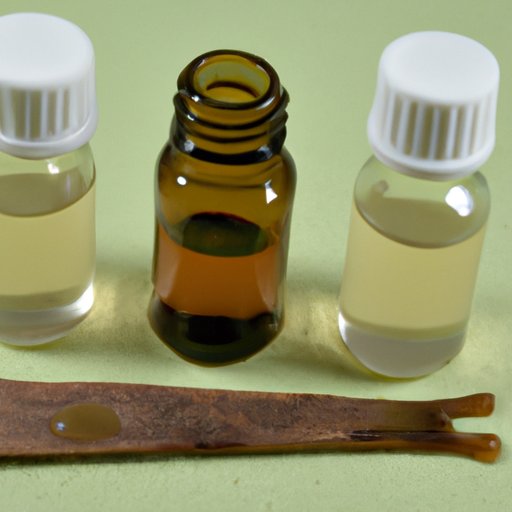Introduction
Fungal nail, also known as onychomycosis, is a common condition that affects the nails of the hands and feet. It is caused by a fungal infection, which can cause the nails to become discolored, thick and brittle. If left untreated, it can be painful and difficult to manage. Fortunately, there are a variety of treatments available to help treat fungal nail.
Over-the-Counter Antifungal Medication
One of the first steps to treating fungal nail is to purchase an over-the-counter antifungal medication. There are a variety of products available, including creams, gels, sprays, and ointments. These products contain active ingredients such as miconazole, terbinafine, and clotrimazole, which work to kill the fungus and stop its spread. Benefits of using OTC medications include convenience, affordability, and ease of use.
Soaking Feet in Vinegar Solution
Another way to treat fungal nail is to soak the feet in a vinegar solution. To prepare the solution, mix one part vinegar with two parts warm water. Soak the feet for 15 minutes, twice a day. The acidity of the vinegar helps to kill the fungus and reduce inflammation. Additionally, it can help to soften the nails and make them easier to trim and file.
Trim and File Nails
It is important to regularly trim and file the nails to help prevent the spread of the fungus. To do this, use a sharp nail clipper and file to carefully trim and smooth the nails. This will help to remove any infected areas and reduce the risk of further infection. Additionally, it can help to keep the nails looking neat and healthy.
Change Socks Regularly
To help prevent the spread of the fungus, it is important to wear clean, dry socks and change them regularly. Wear socks made of breathable fabrics such as cotton or wool, and avoid wearing synthetic materials such as nylon and polyester. By changing socks regularly, you can help to reduce moisture build-up and prevent the spread of the fungus.
Apply Tea Tree Oil
Tea tree oil is a natural antifungal agent that can help to treat fungal nail. To use it, mix a few drops of tea tree oil with a carrier oil such as jojoba or coconut oil. Apply the mixture directly to the affected area once or twice a day. The antifungal properties of the tea tree oil can help to reduce inflammation and kill the fungus.
Wear Gloves
When engaging in activities that involve wet or damp conditions, such as swimming or gardening, it is important to wear gloves. Wearing gloves can help to protect the skin from exposure to bacteria and fungi that can cause infection. Additionally, it can help to reduce the risk of spreading the infection.
Prescription Treatment
If over-the-counter treatments are not effective, it may be necessary to seek medical attention. A doctor can prescribe a stronger antifungal medication that can help to treat the infection. Additionally, they may recommend lifestyle changes such as keeping the feet dry and avoiding tight-fitting shoes. Discussing treatment options with a doctor can help to ensure the best possible outcome.
Conclusion
Fungal nail can be a difficult condition to manage, but with the right treatment, it can be effectively treated. Over-the-counter antifungal medications, soaking feet in a vinegar solution, trimming and filing nails, changing socks regularly, applying tea tree oil, and wearing gloves can all help to treat the infection. Additionally, if these treatments are not successful, it may be necessary to seek medical attention for a prescription treatment. With the right approach, fungal nail can be managed effectively.


